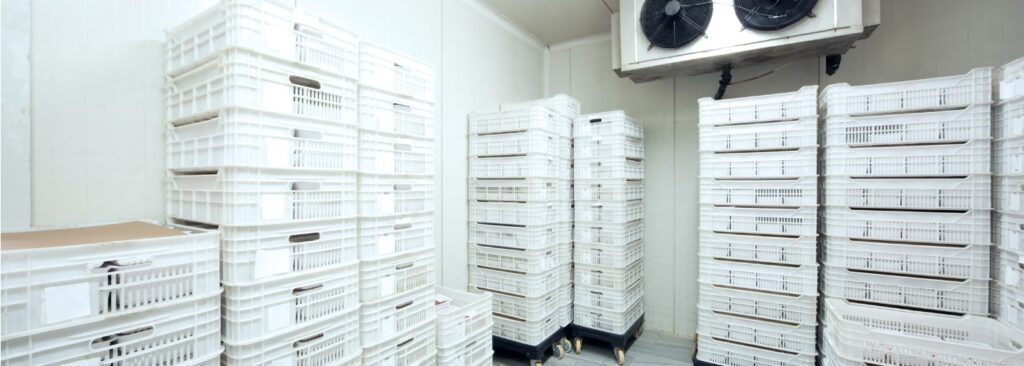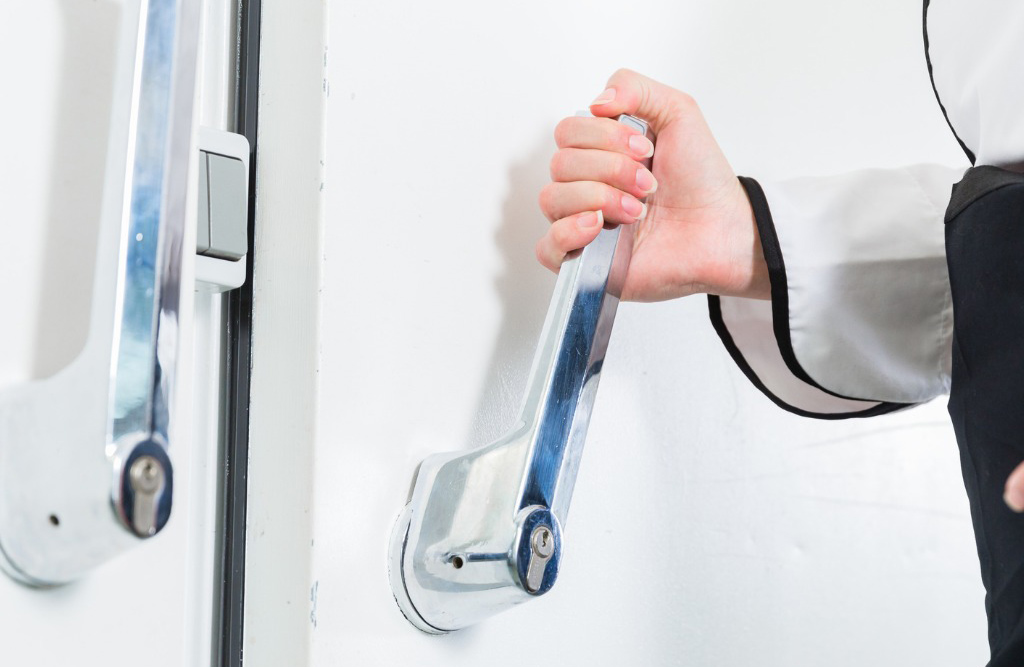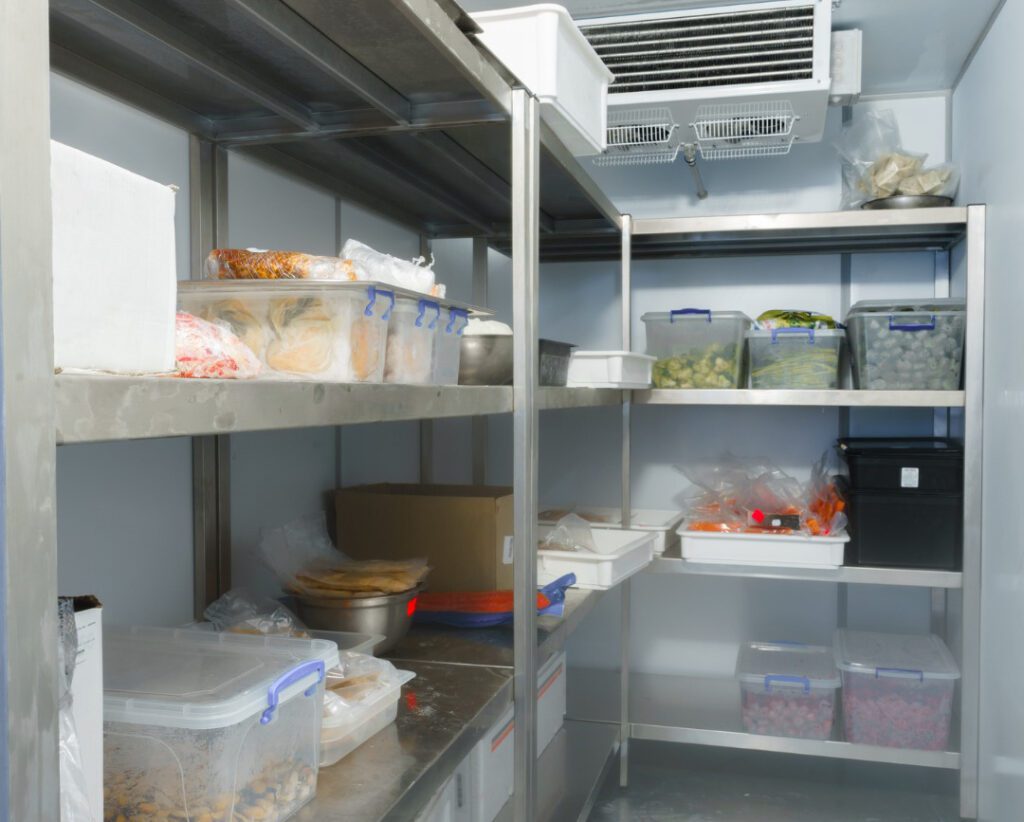
A walk-in freezer is an essential part of any commercial kitchen, providing large capacity and efficient food storage for daily and long-term use. Like any piece of restaurant equipment, the walk-in freezer needs to be regularly cleaned and maintained or it can quickly become problematic and costly. Following these best practices – including cleaning, sanitizing, and defrosting – will help a restaurant or foodservice facility maintain an overall safe and healthy environment for staff and guests.
Needed Cleaning Supplies

A few key supplies needed to get started in the cleaning process include:
- Gloves and masks
- Brooms and mops
- Brushes and towels
- Soap and water
- Multi-surface cleaning wipes
- Sanitizing multi-surface wipes
- Disinfecting multi-surface wipes
- Bristle brush and coil cleaner
- First aid kit
Steps to an Effective Cleaning Process
Everyday Cleaning and Regular Disinfection
The walk-in freezer should be part of a restaurant or food establishment’s regular cleaning routine. Wiping away debris and spilled products, and cleaning and sanitizing surfaces and shelves on a daily basis will keep the unit from getting overly dirty and contaminated with bacteria. Soap and water or disposable wipes can be used for quick clean-ups and to maintain ongoing cleanliness. Using effective sanitizing wipes to clean the interior, exterior, shelves, compartments, and doors should be done on a regular basis to reduce disease-causing bacteria, germs, and pathogens.

Sweeping and mopping the freezer floors regularly and removing debris and foods that can attract pests are also key steps. Always clean up liquid spills immediately as they may freeze, forming ice patches that might clog the freezer or create hazards to the staff. Clean above the freezer as well to remove any dirt accumulation.

Deep cleaning of the freezer should also undergo deep cleaning several times a year, in addition to regular surface cleaning, to keep it operating smoothly. This will require the unit to be taken apart so specific parts and areas can be cleaned. The condenser and coils should be cleaned according to the manufacturer’s instructions. Dust and debris can be removed using a vacuum to make sure pipes are not clogged. Door gaskets, which keep the door sealed, can be cleaned with a soft cloth or wipe and should be inspected weekly for cracks, stiffness, or dirt that might cause damage..
Cleaning the drain lines regularly and fixing clogged lines are also important for keeping the unit up and running. Keeping drains clear will eliminate buildup and mold, and keep pests like drain flies from infesting your kitchen keep pests like drain flies from infesting your kitchen. Dry or remove any excess water from the unit to assist with moisture control and prevent mold growth. A professional should also perform regular inspections to ensure the unit is functioning properly.
Remove Frost Buildup
Ice or frost that is allowed to build up in a freezer can damage the operation of the unit as well as affect the flavor, texture, and safety of food. To avoid frost buildup, there are several methods that can be used.
- Defrost the freezer: Turning off the freezer will allow any ice to melt and avoid problematic buildup. Timing must be coordinated so food can be removed and kept frozen by other means. Once fully defrosted, the unit should be fully cleaned and sanitized as well.
- Scrape out ice: Ice buildup can be removed using methods indicated in the product manual.
Additional Freezer Maintenance
Along with thorough and regular cleaning, other important maintenance should be done to keep the freezer in good condition, including checking parts and the overall functioning of the unit. Keeping track of inventory in the freezer and removing expired or freezer-burnt items will also allow for better food control, organization, and cleanliness. Lastly, making sure the walk-in freezer door remains shut and temperatures are properly set are easy, yet critical, steps to regulate humidity, prevent mold growth, and avoid food spoilage.
Walk-in freezers are a key part of any commercial kitchen’s successful operation – so thorough and regular cleaning and maintenance should be a top priority, and part of every staff member’s job.

